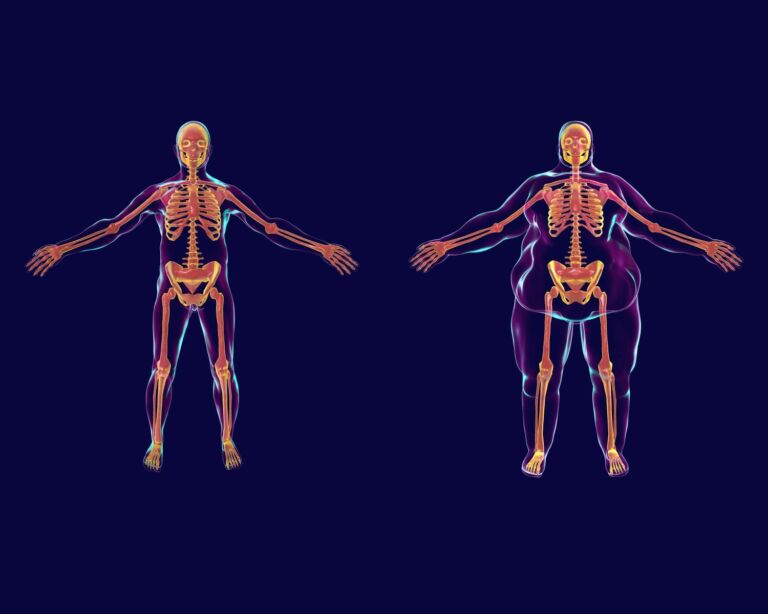Overview: What is ovarian cancer?
The ovaries are part of the female reproductive organs. The almond-shaped formations are located in the pelvis to the right and left of the uterus. Every month, an egg cell grows in it, which is later moved through the fallopian tube towards the uterus. At the time of birth, there are already around 400,000 immature eggs in each of the two ovaries. Hormones control the targeted maturation of these egg cells. At the same time, the ovaries also produce the hormones oestrogen and progesterone.
In ovarian cancer, ovarian cells multiply uncontrollably. In principle, there are benign and malignant tumors in the ovaries: benign tumors do not spread their cells and do not affect other organs; they can therefore be easily removed. Malignant tumors, on the other hand, grow into neighboring organs such as the fallopian tubes, uterus or peritoneum. The bladder, liver, intestines or spleen can also be affected by ovarian cancer. Most ovarian tumors develop in the uppermost covering tissue (epithelial tumors). More rarely, ovarian cancer grows from the supporting tissue (germinal cord stroma tumor). As a rule, the tumor must be removed as quickly as possible. Chemotherapy is often necessary in addition, and radiotherapy less frequently.
Frequency and age
Ovarian cancer is a rather rare type of cancer. In Switzerland, around 600 women are diagnosed with the disease every year. Around three percent of all cancers in women develop in the ovaries. In the vast majority of cases, ovarian cancer does not occur until after the menopause, and usually only after the age of 60. Only one in ten women develops it before the age of 45. At the same time, around one in ten ovarian cancers is hereditary. Statistically speaking, around one in 68 women will develop ovarian cancer in the course of her life.
Ovarian cancer: causes and risk factors
In principle, there is no direct cause of ovarian cancer. Younger women have little to worry about contracting the disease. Women with a BRCA gene mutation have a significantly higher risk of ovarian cancer. That is an estimated 0.1 to 0.2 percent of all women in Switzerland. Of the women whose genes have a BRCA1 mutation, almost half will develop ovarian cancer by the age of 70. In women with a BRCA2 mutation, the risk of ovarian cancer is 10 to 20 percent. There is also an increased probability if several close relatives have ovarian or breast cancer.
Gynecological Tumor Center
At the USZ, numerous specialist departments have joined forces to form a Gynecological Tumor Center. The center is certified according to the guidelines of the German Cancer Society (DKG). A team of experts specializing in the medical treatment of ovarian cancer works closely together here for the benefit of our patients. At DKG-certified centers, patients are treated according to strict quality criteria and, according to current studies, have a better chance of survival on average.
Symptoms: Ovarian cancer is difficult to detect
In the early stages, women usually do not notice that their ovarian tissue has started to proliferate. There is enough space around the ovaries in the pelvic cavity. In addition, egg cells vary in size depending on their stage of growth. Only when the tumor has become very large does it become noticeable. However, the signs are rather unspecific. Possible symptoms can be
- Pain in the lower abdomen that lasts for several weeks
- Digestive problems such as constipation or flatulence
- Unexplained increase in abdominal girth
- a feeling of exhaustion and tiredness
- Weight loss
- (Intermenstrual) bleeding, even after the menopause
- conspicuously frequent urination
However, all these symptoms can also occur with other, harmless diseases. If the malignant tumor has already spread far into the abdominal cavity, fluid often accumulates there. Although this (and often the size of the tumor) increases the girth, the patient’s scales show a weight loss. If you notice such signs, you should seek medical advice.
Ovarian cancer: Diagnosis by us
First we will ask you about your complaints. Then we want to know whether cancer of the female reproductive organs has occurred more frequently in your family. During a palpation examination, both from the outside via the abdominal wall and through the vagina, we feel for signs of a change. We can see the organs even more precisely with a vaginal ultrasound. As a rule, this allows us to determine how large the tumor is and where it is located. Even more precise information is provided by computer tomography (CT), magnetic resonance imaging (MRI) or positron emission tomography (PET).
Ovarian cancer is usually diagnosed by surgery. During the operation, we can also see directly how far the tumor has spread. Only during the operation can we decide whether the cancer is benign or malignant. This is because only an examination of the removed tissue under the microscope reveals whether cancer cells are present and which ones they are.
Tumor markers, on the other hand, have not proven effective in the diagnosis of ovarian cancer. However, they can be an indication of this. After successful therapy, the tumor marker can sometimes indicate if cancer cells grow again later (recurrence).
Self-help groups
The exchange with people who are affected by the same disease can be a great support in coping with the disease. Advice on finding a suitable self-help group is available from Selbsthilfe Zürich. Self-Help Zurich and the University Hospital Zurich are cooperation partners in the national project “Health literacy thanks to self-help-friendly hospitals”.
Second opinion for ovarian cancer
When a cancer diagnosis is made, a second medical opinion is an important decision-making tool. The Comprehensive Cancer Center Zurich supports you with a professional expert opinion. They receive a thorough analysis of the situation as well as personal advice and quick answers to their questions.
Ovarian cancer: prevention, early detection, prognosis
As with all types of cancer, you cannot prevent the disease. On average, women with fewer eggs appear to develop ovarian cancer less frequently. This means that taking a contraceptive pill as well as several pregnancies and long periods of breastfeeding can reduce the risk of developing ovarian cancer.
You can also reduce the risk with a fundamentally healthy lifestyle:
- Do not smoke (smoking is not a risk factor for ovarian cancer itself)
- Eat a healthy diet.
- Get plenty of exercise.
- Avoid being overweight (obesity is not a risk factor for ovarian cancer itself).
Women whose families have several close relatives with ovarian or breast cancer can be tested to see if they have a BRCA mutation. Her blood is examined for this purpose. If it turns out that they have an increased risk of ovarian cancer due to a BRCA mutation, they can have their ovaries and fallopian tubes removed after family planning has been completed. In individual cases, the cancer then occurs on the peritoneum, but the risk of developing cancer is still significantly reduced.
Early detection of ovarian cancer is not possible. It can also go undetected during typical gynecological check-ups. Even with targeted examinations (vaginal ultrasound, determination of the tumor marker), studies have not been able to reduce the mortality rate of those affected.
Progression and prognosis (ovarian cancer)
In three quarters of all patients, ovarian cancer is only discovered at an advanced stage. This results in a very low survival rate: five years after diagnosis, only one in five patients is still alive. New, more targeted drug therapies can improve the prognosis of the disease, even in advanced stages. However, if the tumor is detected in good time – i.e. if it has not yet spread to other organs – the chances are good. All cancerous tissue can then be removed by surgery. However, pregnancy is no longer possible afterwards.

